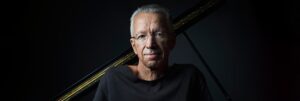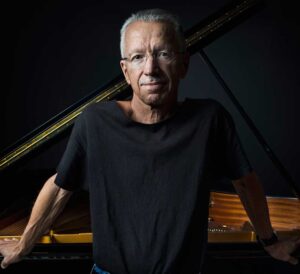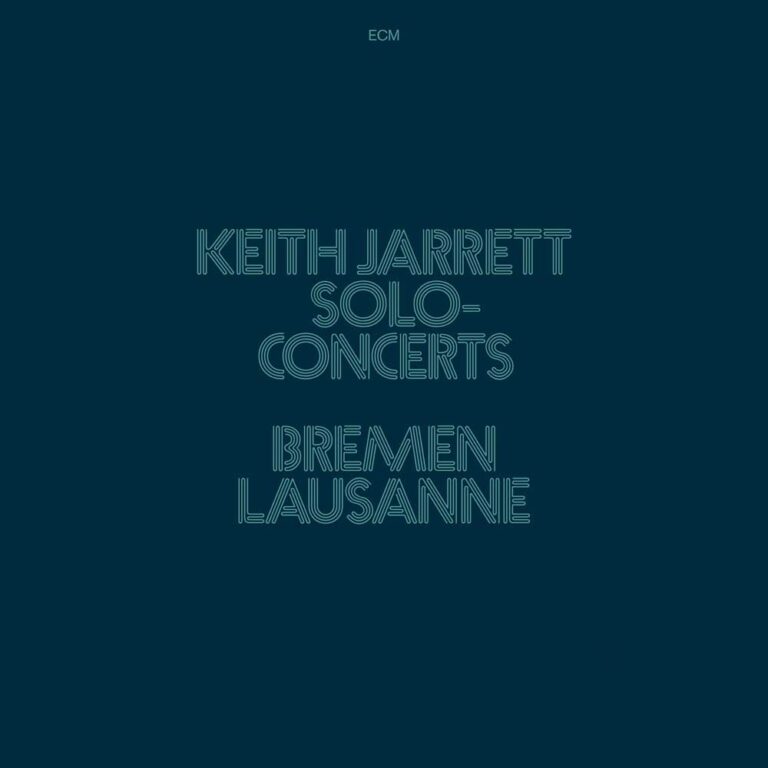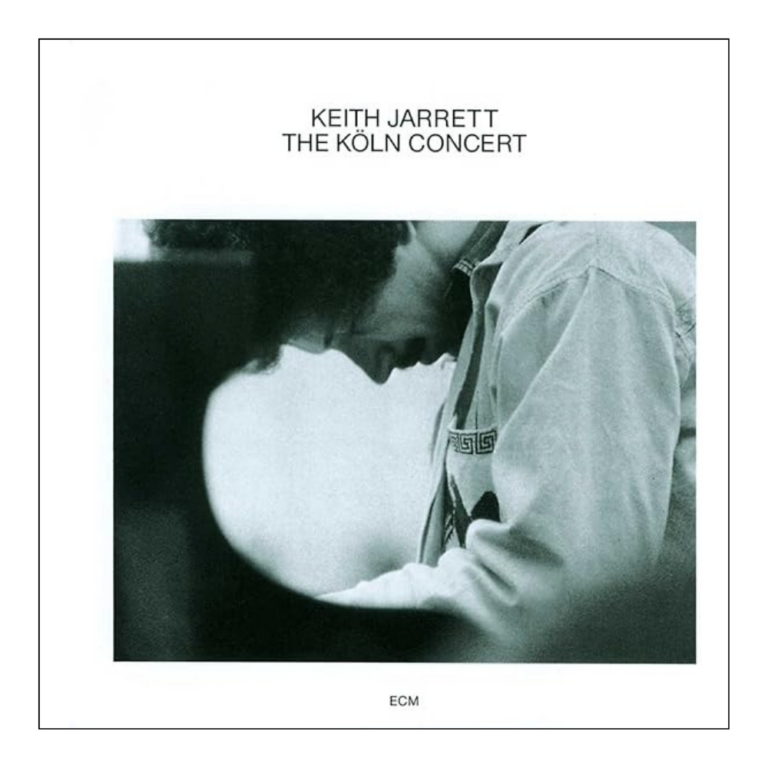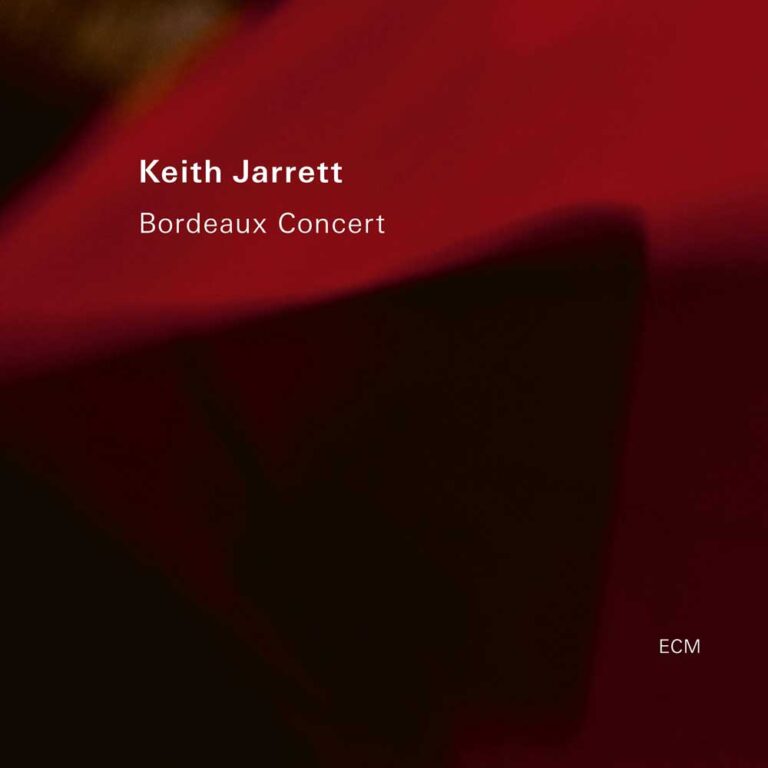First of all, it may be helpful to define “improvisation” – it could be seen as “composing in real time”. The great classical composers “improvised”, in the sense of generating material which flowed from one idea to another and didn’t necessarily feature recurring motifs – and it is now widely understood that J.S. Bach was an effective “real time” improviser on organ or harpsichord.
Though initially immersed in classical music when taking up the piano at the age of three, Jarrett soon moved away from written material. During his very first solo recital at eight years old, he played a totally improvised piece named “A Walk In The Zoo”. In a 1995 interview with Studs Terkel, he described improvisation as his “essence”, and in the latter part of his distinguished seven-decade career he has probably become best known for his extraordinary solo piano pieces. Jarrett is certainly not the first solo piano improviser, and many notable jazz composers have adapted material from long-form improvisations, but he is the musical figure who has arguably raised the format to the status of high art.
On 8 November, Jarrett is set to release “The Old Country: More From The Deer Head Inn”, a live selection featuring never-before-heard recordings from his famous concert of 16 September 1992 alongside bassist Gary Peacock and drummer Paul Motian. To celebrate this landmark release on ECM Records, we explore six key piano improvisations from across his career.
“Part 1, 12 July 1973” From “Bremen/Lausanne” (1973)
The solo piano pieces captured on the “Bremen/Lausanne” boxed set caused a sensation. Reportedly Jarrett was in considerable pain during the first concert in Bremen – a recurring back problem saw him wearing a brace and guzzling painkillers. But those closest to Jarrett, including Manfred Eicher, believe he often performs best when under pressure, and sure enough the concert was a triumph. The 18-minute “Part 1” starts by stopping the world with some glorious, floating lyricism, before he embarks on an extravagant display of horn-like virtuosity underpinned by an intricate bass vamp. The remarkable piece concludes with some menacing, dark sound clusters, but it feels like it could have gone on much longer.
“Part 1” from “The Köln Concert” (1975)
In a 1987 interview with Ben Sidran, Jarrett mentioned that his immersive approach to improvisation was akin to “drowning”, and that it was a “gift…a sacred thing, not to be fooled with”. This epic 26-minute improvisation perhaps best illustrates these aspects. The problems on the night have been well-documented (a substandard piano and lack of sleep) but, like the work of a great stand-up comic, there’s a seamless series of vignettes with no obvious “joins” or marking time, from the tender lyricism of the opening section (used in several movie soundtracks) to the almost sitar-like effects that kick in around the 20-minute mark.
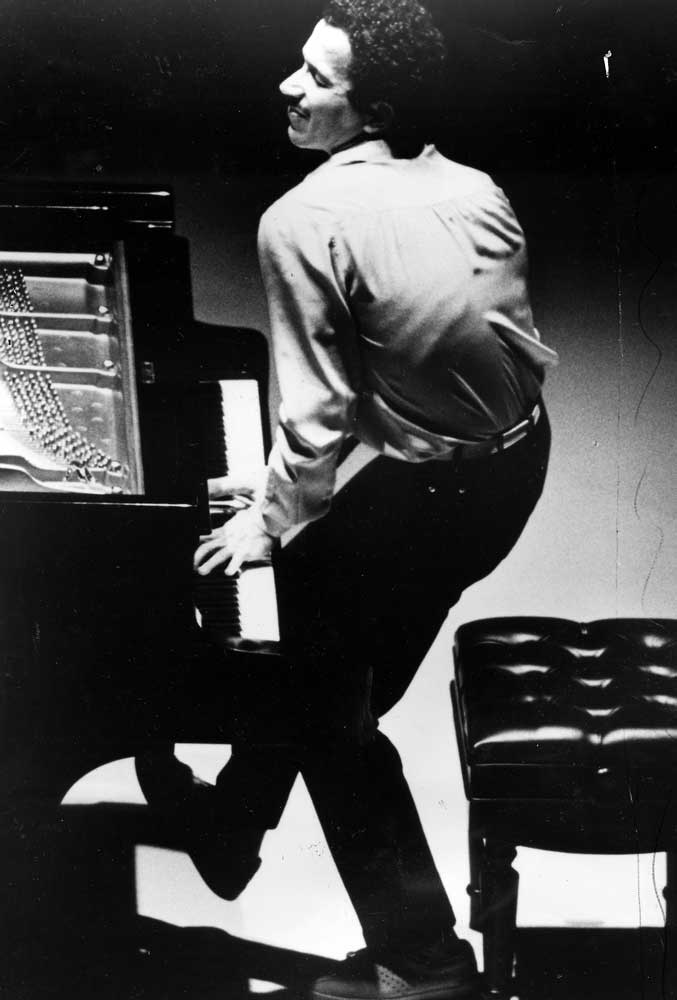
“Stella By Starlight” from “Standards Live” (1986)
Jarrett had learnt hundreds of standards during his early professional career playing solo in the pubs and clubs of Boston and Pennsylvania so had much to draw from when he formed the legendary Standards Trio with Gary Peacock and Jack DeJohnette in 1983. This Victor Young song composed for an unprepossessing 1944 Hollywood movie has become a jazz standard, but arguably Jarrett produced the definitive version here, recorded in Paris on 2 July 1985. His unaccompanied three-minute intro is a mini masterpiece of spontaneous invention. He reharmonises the melody and pulls it through various key changes, leaning on strikingly original note choices throughout. He then repeats the trick for his outro, before ending the piece on an unexpected but perfect major-third.
“Part V” from “Budapest Concert” (2016)
“Budapest Concert” mainly showcases Jarrett’s dark, brooding, complex late style, but “Part V” unleashes an exquisite, improvised ballad which is so memorable and self-contained that it sounds like it was pre-composed. Resplendent with Jarrett’s ingenious chord voicings, the main theme is so instantly familiar that you’d swear it came from the Great American Songbook.
“Part V” from “Bordeaux Concert” (2016)
The rippling, propulsive rhythms and overlapping horn-like melodies generated by Jarrett here create a piece unlike anything else in his discography. The sheer devil-may-care nature of his playing is almost Cecil Taylor-like in its intensity, part of a strikingly ambitious album which flirts with atonality and even serialism.
“Straight No Chaser” From “The Old Country: More From The Deer Head Inn” (2024)
Jarrett’s solo on this version of Thelonious Monk’s perennial classic is a masterclass in melody construction. It starts by stretching the blues to its absolute limit, then develops into a fascinating set of “question” and “answer” phrases, perfectly prodded along by drummer Paul Motian; this September 1992 concert was the first time he had played with Jarrett since 1976. The kinship between the two is palpable, as it is throughout “The Old Country” live album.
Read On… Ethan Iverson: To Standard or Not To Standard?
Matt Phillips is a London-based writer and musician whose work has appeared in Jazzwise, Classic Pop, Record Collector and The Oldie. He’s the author of “John McLaughlin: From Miles & Mahavishnu To The 4th Dimension”.
Header image: Keith Jarrett. Photo: Henry Leutwyler / ECM Records.

